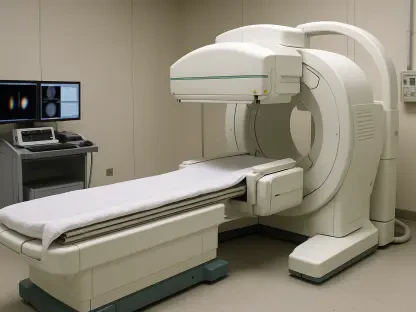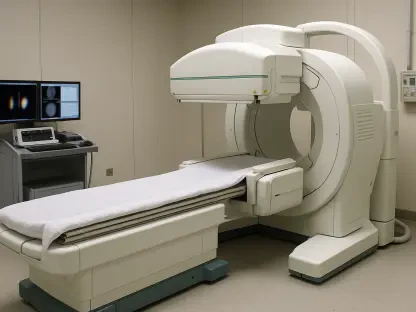Despite the significant global investment in digital transformation, which could reach approximately $3.9 trillion by 2027 according to forecasts by the International Data Corporation (IDC), many initiatives fail. This failure is not usually due to technological flaws, but rather inadequate change management. The NHS, with increased funding and commitments from figures like Keir Starmer and Lord Darzi, stands at a significant juncture, prioritizing digital-first healthcare. For the NHS to navigate this transformative period successfully, empowering staff with the right tools, knowledge, and support is essential.
The Importance of Change Management
Addressing Resistance to Change
The success of digital transformation in healthcare is intricately tied to effective change management, which focuses on the human aspects associated with adopting new technologies. Resistance to change, often rooted in fear of complexity or negative past experiences, is a significant barrier, especially in healthcare settings where traditional methods are deeply entrenched. Empathy and communication play crucial roles in overcoming this resistance. By understanding the concerns and apprehensions of the workforce, leaders can tailor their strategies to ensure smoother transitions.
Preparing the workforce involves more than just training sessions; it requires ongoing support, consistent communication, and alignment with the daily workflows of healthcare professionals. Change management helps staff comprehend the necessity of new tools and fosters acceptance. When healthcare workers understand the practical benefits, such as saving time and reducing errors, they are more likely to embrace technological advancements. Without this structured approach, digital systems may face underutilization, rejection, and ultimately, wasteful investments with no improvement in patient care.
Practical Implementation Strategies
Effective change management involves clear and deliberate strategies to integrate new digital tools seamlessly into the healthcare environment. Training is just one piece of this puzzle; it must be coupled with continuous support and demonstrations of the practical benefits. Regular communication about the progress and success stories from other departments can also alleviate apprehensions and create a positive outlook on the changes. For example, showing how a new electronic health record system can reduce administrative burdens might help staff appreciate the new technology.
It is also essential to align new systems with clinical workflows. Healthcare environments are high-pressure and resource-limited, making the practical implementation of new technologies challenging. Aligning digital tools with the existing workflow ensures that healthcare professionals can easily integrate them into their daily routines without significant disruption. This alignment not only improves acceptance but also enhances the efficiency and effectiveness of care delivery. Continuous support, feedback loops, and iterative refinement of processes and systems play a significant role in ensuring sustained success.
Collaboration with Technology Providers
The Role of Technology Providers in the Adoption Process
Technology providers must be more than product suppliers; they should be active partners in the adoption process. This partnership involves aligning technology with clinical workflows, offering hands-on training, and providing on-site assistance to address emerging challenges. Technology providers must be responsive to user feedback, continuously refining their systems to meet real-world needs and ensuring long-term success. This collaboration ensures staff feel supported and are more likely to embrace new technologies, enhancing the overall effectiveness of digital transformation initiatives.
These providers should engage with healthcare organizations from the initial stages of the digital transformation, providing insights and expertise that can help shape effective implementation strategies. By understanding the unique needs and challenges faced by healthcare professionals, technology providers can tailor their solutions to better fit the operational realities of these environments. A collaborative approach increases the likelihood of successful technology adoption and integration, minimizing disruptions and maximizing the benefits of new digital tools.
Real-world Applications and Continuous Improvement
The ongoing partnership between healthcare organizations and technology providers is critical for continuous improvement. Regular reviews, feedback sessions, and collaborative planning help keep technologies effective and relevant as patient needs and clinical practices evolve. This iterative approach ensures that digital tools remain aligned with strategic goals, delivering ongoing value and improving patient outcomes. For instance, improving an electronic health record system based on user feedback can enhance usability and efficiency, leading to better patient care.
Technology providers must also prioritize responsiveness to user feedback, making necessary adjustments and updates to address any emerging challenges promptly. Hands-on training and on-site assistance during the initial rollout phase are crucial for building confidence among healthcare staff. Additionally, technology providers should offer robust support structures to help address any technical issues that arise, ensuring minimal disruption to clinical workflows. This commitment to collaboration and continuous improvement fosters a culture of innovation and acceptance, paving the way for successful digital transformation.
Ensuring Long-term Success
Sustaining Transformation Efforts
Sustaining digital transformation efforts requires an ongoing commitment to improvement and adaptation. Regular reviews and feedback sessions are vital for keeping technologies up-to-date and effective. By continuously evaluating the impact of digital tools and making necessary adjustments, healthcare organizations can ensure that they remain aligned with evolving patient needs and clinical practices. This iterative process helps maintain the relevance and usefulness of digital systems, ultimately contributing to their long-term success.
Collaboration between healthcare organizations and technology providers should extend beyond the initial implementation phase. Continuous improvement efforts should be a joint endeavor, with both parties actively participating in the review and refinement of digital tools. This collaborative approach helps identify potential issues early, allowing for timely interventions and adjustments. Additionally, fostering a culture of openness and communication within the organization encourages staff to share their experiences and provide valuable feedback, further enhancing the effectiveness of digital transformation initiatives.
Impact on Patient Care and Operational Efficiency
Proper training and resources are essential to ensure that employees can effectively implement and adapt to new technologies. This approach will not only smooth the transition but also enhance the overall quality of patient care. The commitment to a digital-first NHS aims to streamline processes, improve efficiency, and ultimately lead to better health outcomes for the population.









